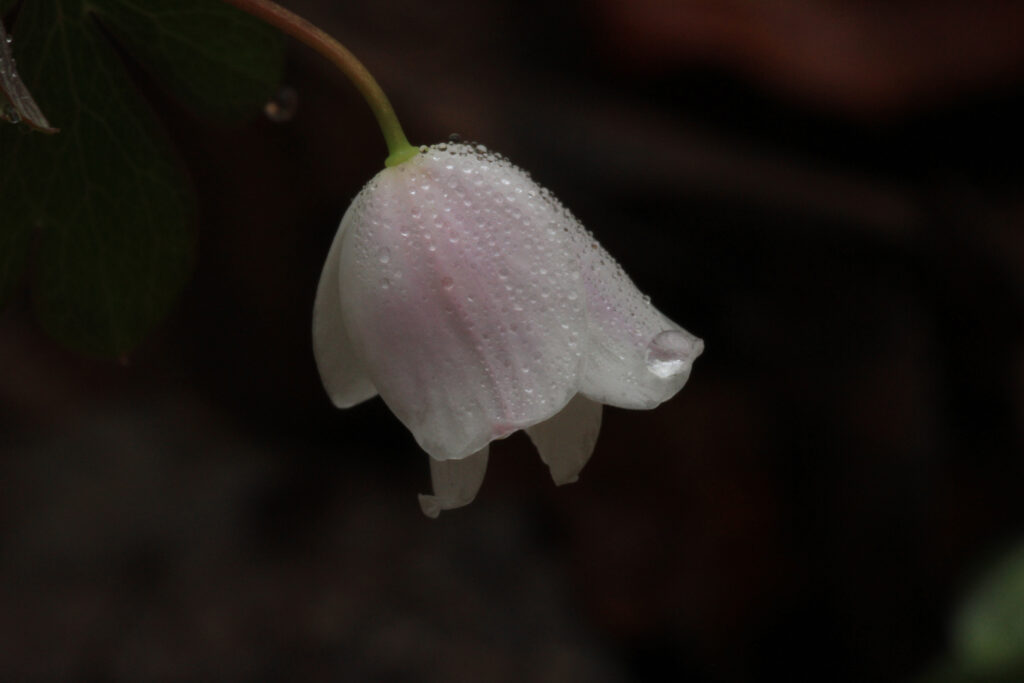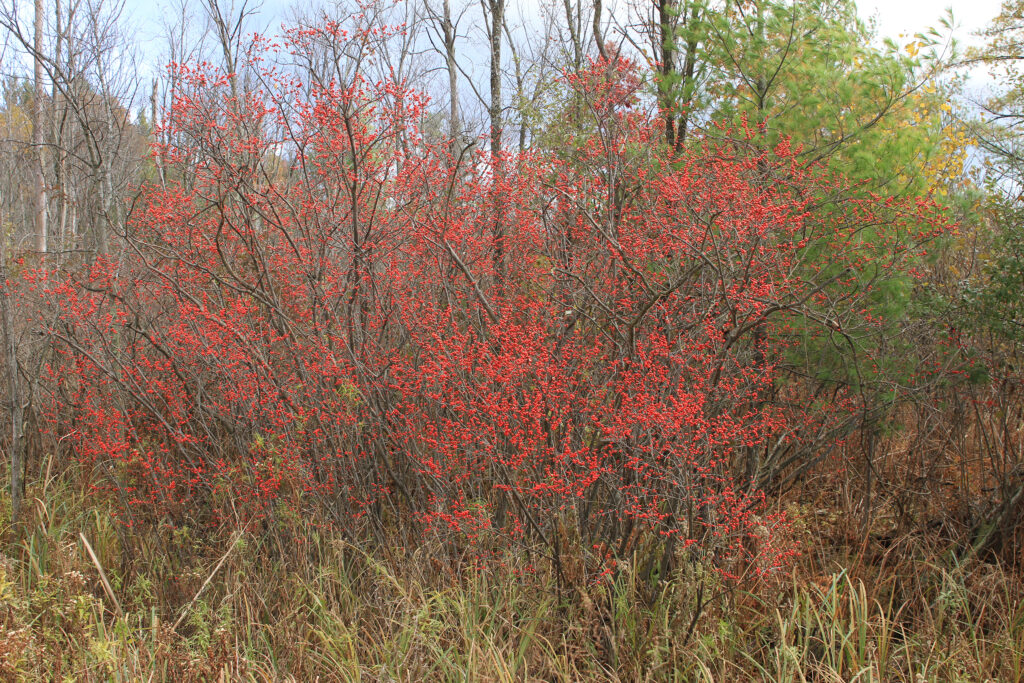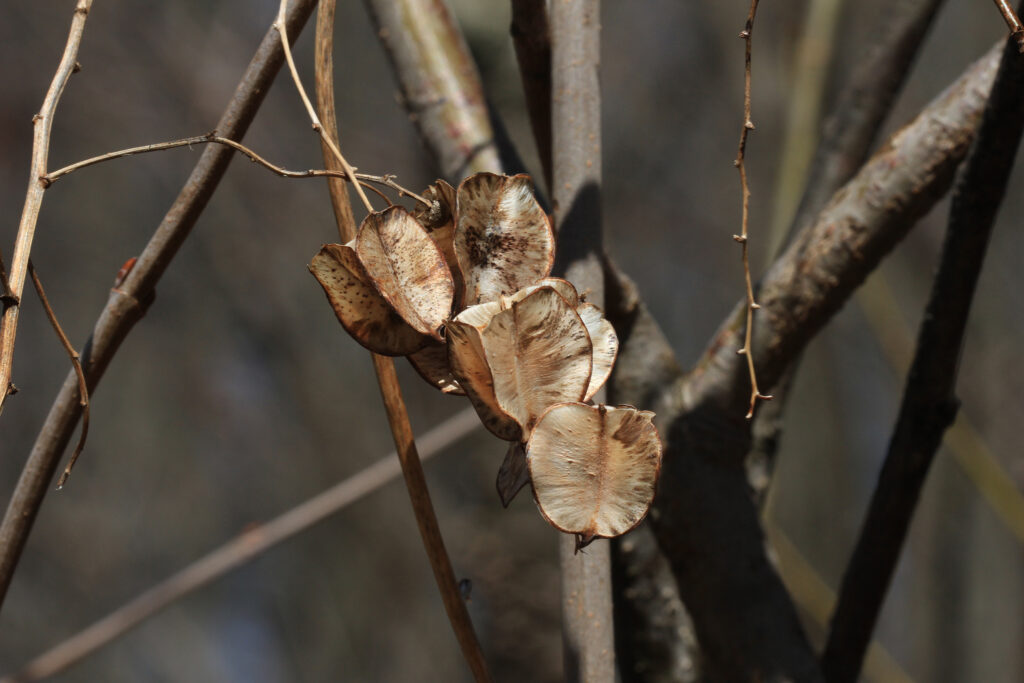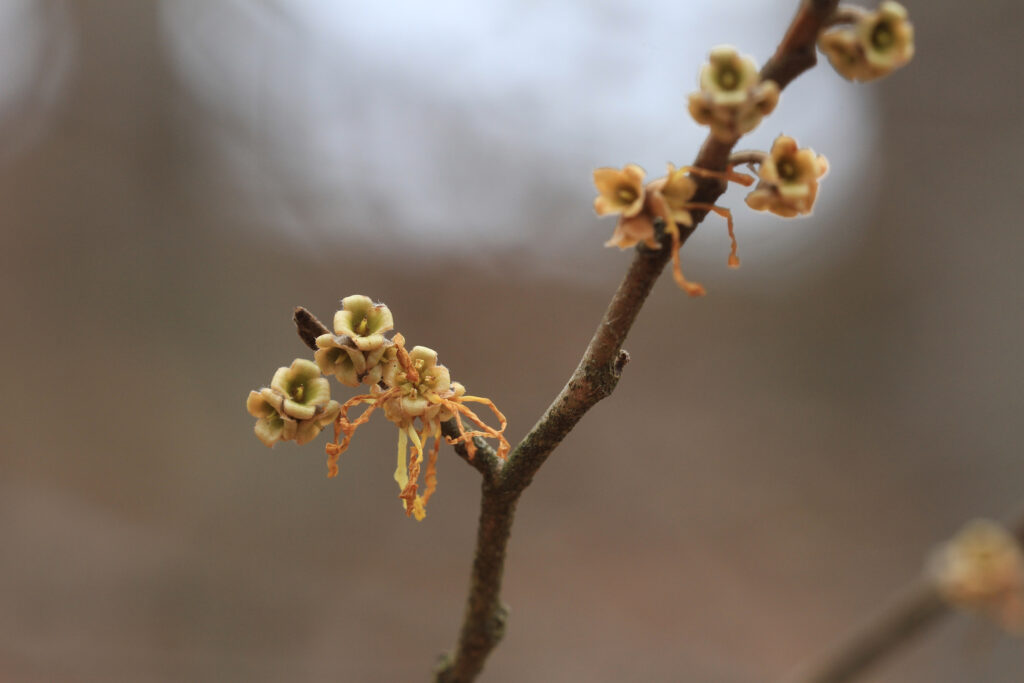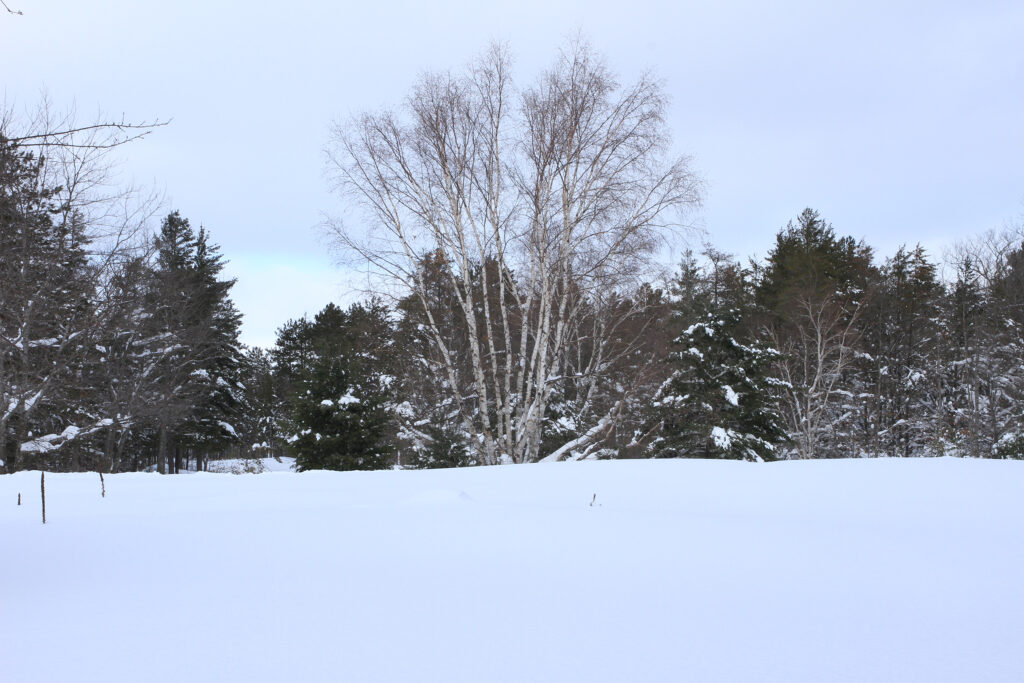
Native plants can add texture, character and visual interest to the winter landscape. All of our native habitats contain plants that can add interesting features to the winter garden. The exact species you chose will depend on your conditions. When it is cold and white around us, I enjoy viewing and photographing our natives in their winter beauty. I have photographed well over 60 herbaceous plants plus grasses and more than 40 species of trees in winter. Many of the tree photographs are of buds and interesting bark patterns or textures. There trees and shrubs that provide interesting and colorful buds when viewed up close. They can also offer bark textures and patterns as well as berries, seed pods and in some cases the catkins for the early spring flowers.

With the weather we have been having so far this year in southern Michigan, there are plants in the woodland and wetlands that are green. These are usually green under the snow, but with the lack of snow we can enjoy finding them. The False-rue Anemone will even bloom in the winter if conditions are right. The accompanying photo was taken on December 3, 2015. I have also seen it bloom in November and January.
A few woodland wildflowers remain visible in some form in winter if the snow is not to deep or heavy. Blue cohosh with its deep blue colored fruit on a straw-colored stem can often be found as can the seed umbel of the Leek. A native Euonymus, the Running Strawberry-bush’s stems remain bright green all winter.

Trees can add character to the winter landscape, whether by the stately forms, interesting and eye-catching bark, buds or sometimes fruit left over from the fall. Conifers always add color to the white and often otherwise dead looking landscape. Some trees such as sprawling beeches or clumping birches add mood and character. Others haver exfoliating bark that peels in plates like the Shagbark hickory or Sycamore. Corky ridged bark of the Hackberry adds some texture interest when walking past them. Flowering dogwood not only gives us beautiful flowers in spring, but the larger onion bulb shaped buds are clearly visible from fall through the winter months. The smooth and lighter colored bark of both the American beech and Muscle wood also then to stand out from their surrounding companions.
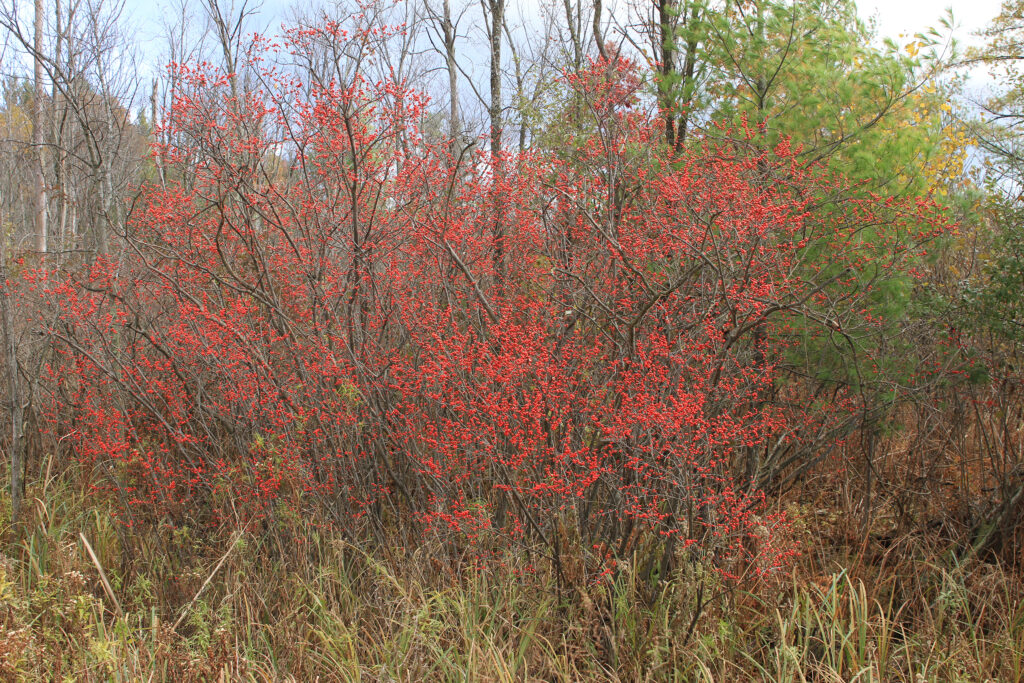
There are many shrubs that can add color and interest as well. The first on most will think of is likely to be the Red-osier dogwood with it bright red stems. The color seems to be more intense when growing where it gets plenty of sun. The Silky or Pale dogwood can also have red stems. Speaking of red, we must mention the bright red berries on the Michigan holly. Although they can remain throughout the winter, they are at their best before mid to late winter. The female holly loaded with red berries stands out from the other shrubs and trees at the wetland edges and is easy to spot, even while driving. Witch-hazel also offers some winter interest as it has both cones from the previous year and flower remnants at the same time in winter. They bloom in the fall and occasionally into the early winter and leave behind the bracts looking like winter flowers. The brown papery “bladders” that contain the seeds of the Bladdernut are also showy in winter as the last until the following year. If you shake them, you can hear the seed rattle inside. The round buds of the early blooming Spicebush and the brown hairy buds of the Pawpaw are also attractive in winter. A healthy tea can also be made from the Spicebush buds and bark. American hazel forms male catkins in the fall and they hang all winter waiting for the small red female flowers in early spring adding winter and early spring interest.

The prairies and fields also offer many plants of interest in the winter as many are sturdy enough to stay upright in the snow. Goldenrods and asters hold their form all winter. The rounded head of Bergamot which smells similar to oregano when crushed also holds it form as does the spikey heads and leaves of the Rattlesnake master. The minty smelling Mountain mint also holds its form all winter. The cream-colored cottony seed on the Thimbleweed stands out from the white snow. The texture reminds me of the old cotton stuffed mattresses of years gone by. The black seed pods of the White false indigo remain upright and beautifully contrast against the white snow all winter. Common and Swamp milkweeds are also very visible, reminding us of warmer days to come.
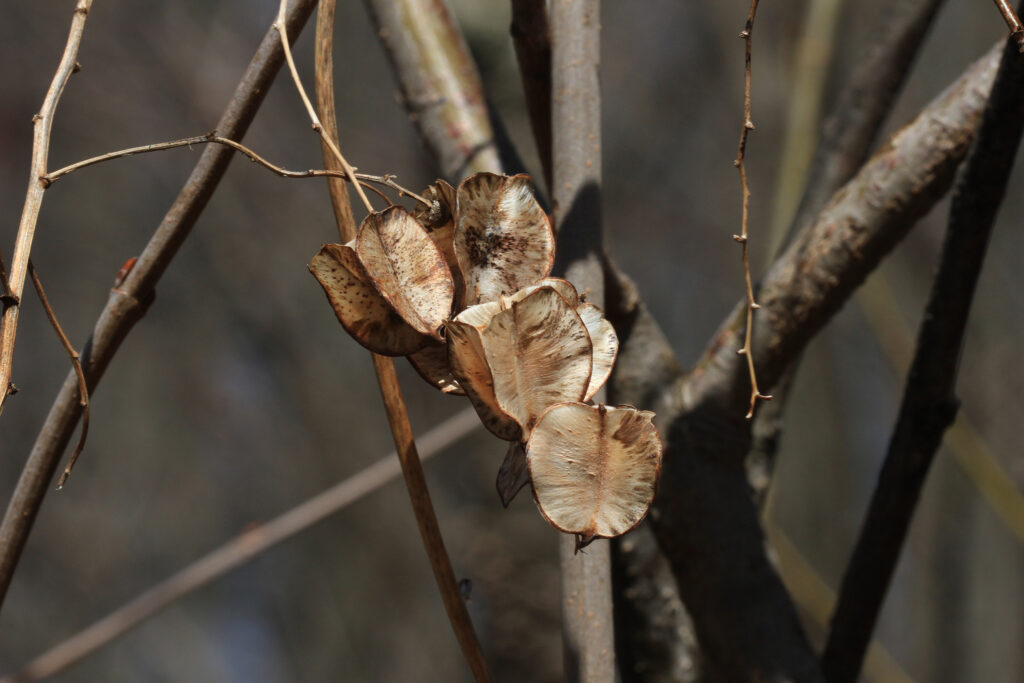
Vines can also add form and interest to the landscape. The three-winged seed pods of the Wild yam and the wispy seed heads Virgin’s bower are very attractive if you have a place suitable to grown them.
Not only do these plants add winter interest to the landscape, but they also provide food and shelter for wildlife. There are many birds that will eat the left-over fruits and seeds.
There so many more I could mention in all these groups that we could fill volumes if I listed them all. This is just a sampling to help you see the possibilities for your landscape and maybe encourage you to get out and look for some interesting plants in winter.
 Click on the title of a post to view a full gallery of images.
Click on the title of a post to view a full gallery of images.

